Remembering 'Chick' Meagan
The death, at 88, of Mick Meagan this week reduces the illustrious cadre of players who contributed to Everton’s first post-war League Championship title to just five. Rob Sawyer and David France pay tribute to 'Chick'
Michael Kevin Meagan: 29 May 1934 – 27 November 2022
I was so fortunate with Everton. It’s a family club, with friendly staff and a proud soccer tradition – and Liverpool is such a marvelous city, a real soccer capital.’ – Mick Meagan, 1992
The death, at 88, of Mick Meagan on 27 November, reduces the illustrious cadre of players who contributed to Everton’s first post-war League Championship title to just five (John Morrissey, Derek Temple, Tony Kay and Ray Veall and Frank Wignall).
Raised in the Churchtown area of Dublin, ‘Chick’ – as he was commonly known – was a hugely likeable character whose playing career spanned three decades. Spotted by an Everton scout in the spring of 1952, in a match against a Liverpool County side, he was invited over on amateur forms. He turned pro in September of the same year.
He recalled the coaching team in that would work with him in the five-year ascent to the first team: ‘When I arrived there , there was Harry Cooke, Charlie Leyland, Gordon Watson, Stan Bentham and then Bill Borthwick. They were a lovely bunch of men who used to look forward to getting out to play the five-a-side matches. It was great to have them around the club.’
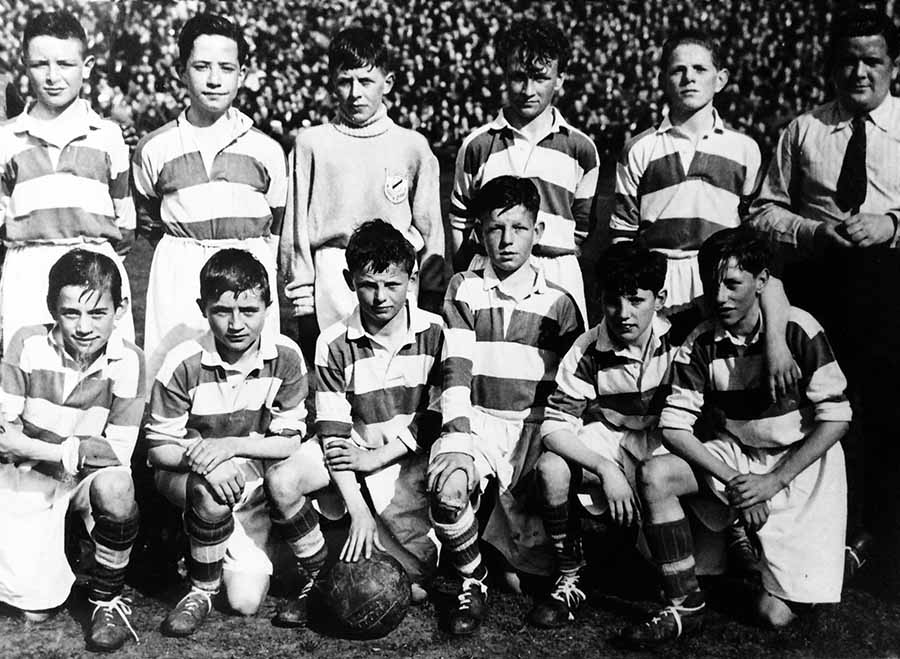
A young Mick Meagan (middle, with the ball) in the 1940s
The senior pros all had encouraged the teenager to be patient and to remain confident that one day he would become an Everton regular and Ireland international. The fact that Everton had such a strong contingent from the Emerald Isle (Jimmy O’Neill, Don Donovan, Tommy Clinton, Peter Farrell, Tommy Eglington, John Sutherland and George Cummins) helped him enormously in his early years on Merseyside, as he explained in this Toffeeweb interview in 2013: ‘It was a great help when I first arrived having all the Irish lads there, but the Liverpool people were great too. From Dublin to Liverpool was like from home to home. The people made me feel so welcome.’
A lack of pace saw him converted from an inside-forward to a wing-half – a position ideally suited to his football intelligence and excellent technical ability. Gordon Watson, the one-time Everton player who was an Everton coach in the 1950s, recalled: ‘In many ways, I likened him to myself – both of us were left-halves in First Division championship-winning sides whose careers were impacted by others. Mine by Adolph Hitler, Mick’s by Mr. Moores and his appetite for expensive recruits. Although he was an Ireland international, I spent hours working on his passing technique. Unlike some teenagers, who thought they knew better, he took on board what I said to him. Others may disagree but I preferred him at left-half – where he had the space to use his football nous and passing skills.’
Mick finally made his first team bow, under Ian Buchan, on the opening day of the 1957/58 season, a 1-0 defeat of Wolves. Birkenhead-born Brian Harris recalled how he would compete with Mick for selection at left-half over the seasons that followed: ‘Chick and I fought over a place in the first-team line-up, not once but twice. I won the battle for No. 6 shirt because I had been a left-winger with above average pace – of course, nothing like that of Jimmy Harris. Though we competed for the same jobs, Chick was always friendly, helpful and laughed at my jokes.’ Harris explained that Mick did have one trick in his locker: Also Gordon had taught him how to take throw-ins. They would spend hours throwing footballs – and also medicine balls – towards each other.’
Out of favour at the tail-end of Johnny Carey’s reign – as John Moores pumped money into squad additions – Mick didn’t moan, giving his all for the reserves. He was rewarded for his application – and ability – when the incoming Harry Catterick converted him into a full-back in the spring of 1962. He made 32 League appearance in the title-winning season of 1962/63, the majority in the number three shirt, keeping out specialist left-back George Thomson. These were the best of times, culminating in the euphoria of clinching the title with a 4-1 defeat of Fulham: ‘The greatest thrill in all the years I have been with the club came on the final day of the season. We knew that if we beat Fulham, the title was ours-no matter what Spurs did. And we made no mistake. THAT was the day, all right.’
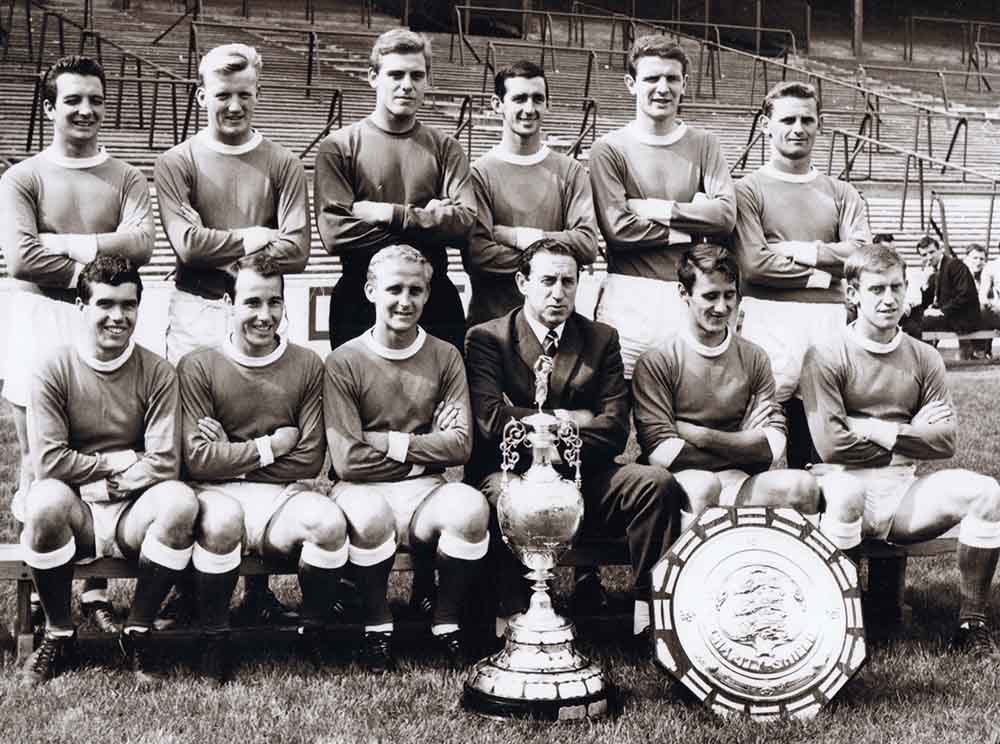
How did Mick’s title-winning teammates view him? David takes up the story:
I’ve always been fascinated by the dynamics between teammates and through my friendships with players from that era, I was able to gather notes on their thoughts about one another. I would like to share their memories of Mick Meagan. First up is goalkeeper Gordon West, a Yorkshireman blessed with the knack of calling a spade a spade:
‘I liked Chick. It was easy to like his Irish ways and gift of the gab. He was a solid and tidy footballer who would play anywhere for Everton – even in the reserves. Like others who come through the ranks, his contributions were not fully appreciated by the fans compared to those of the big money signings. Something that remains the same today (2006). Originally a left-half, he lost his place to Hookie (Harris) who in turn lost his place to Tony Kay but that’s another story. Chick was converted into a left-back and was a big improvement on James Bond (George Thomson). Neither were fleet of foot, but the Scotsman was no Flying Scotsman and really struggled with the speed of the English game. Whereas Mick was a solid defender except when faced by speed merchants like Birmingham City’s Mike Hellawell.’
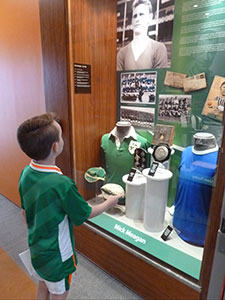
The gallery of Mick's career at the FAI head office
Next is the distinguished maestro of the sliding tackle, Alex Parker:
‘While he didn’t possess the acceleration and bite of a top-drawer left-half, he was a very good left-back. Brave, solid and clean – that was Mick. I think it was Harry Catterick who converted him into a full-back because I remember the boss telling him that his job was to defend and not to wander beyond the half-way line like that Scottish nomad Parker. Of course, I was capped Scotland as a right-back but fancied myself as a goal-scoring inside-right. Mick, Hookie, Nat (Temple) and Labby were home-grown players who were not out of place in an expensively assembled team of all stars.’
On to my then neighbour in Washington State, Jimmy Gabriel:
‘Mick was a different type of half–back to me. He was a gentleman whereas I was warrior. Every good team has a warrior. During my time at Everton, we had a few of them – Bobby Collins, Dennis Stevens, John Morrissey, Roy Vernon and Tony Kay. I‘ve always considered the football pitch to be a battlefield, whereas Labby, Tom (Jones) and Chick were more sporting. I can pay not bigger tribute to Mick Meagan than to say that it took someone like Ray Wilson, one of the best left–backs in the world, to replace him.’
Now to my dear friend Brian Labone:
‘Before the arrival of Alex Parker and Bobby Collins, I think that Mick was the only full international on the club’s books. He was a good footballer and loyal friend. We had come through the junior ranks together. No doubt others will claim that he was a tidy passer and good reader of the action who was steady but slow. While possibly true, I think that he also lacked the unwavering self–belief that top players ooze and that Mick’s skills deserved. There again, we all can’t be Alan Ball. In many ways, he reminded me of that other Blackpool illumination – Jimmy Armfield.’
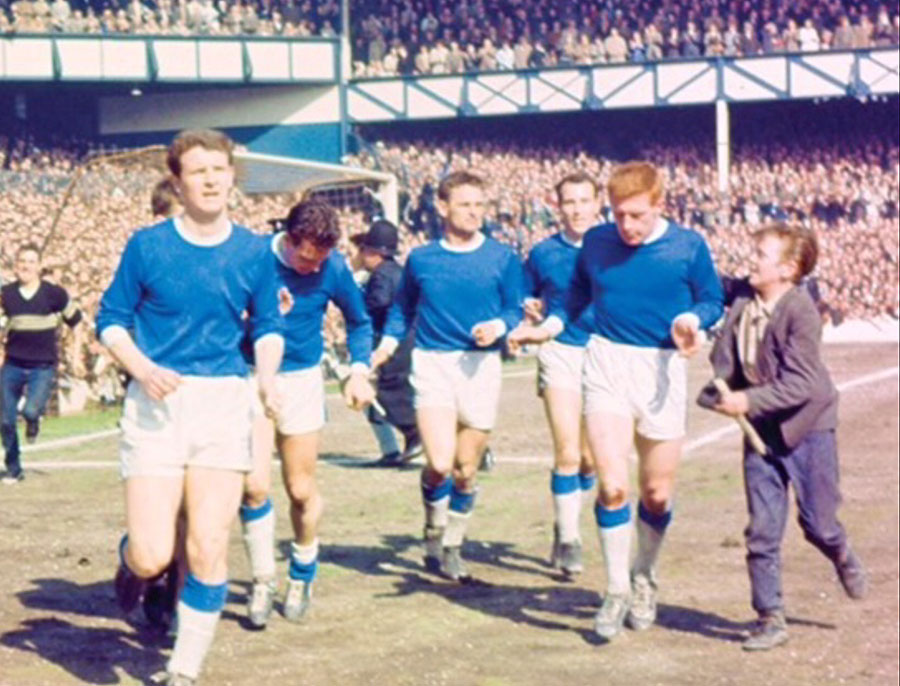
Centre–half Tom Jones, better known as TE Jones, played for six seasons alongside the Irishman:
‘Chick was a calm footballer; someone who rarely panicked under pressure and never lost his temper when kicked. He didn’t possess the fiery temperament associated with his countrymen. Everybody liked him. He rarely complained and possessed a biting sense of humour. Chick loved to laugh. At the first Hall of Fame dinner, I recall Jimmy Harris expressing his disappointment at not being inducted. The centre–forward declared ‘Tom, if you are in the Hall of Fame, how come I’m not? What am I going to tell my grandchildren?’ Our table went quiet, until Chick said, ‘Why not tell them you weren’t good enough?’
Perhaps no–one knew Mick Meagan as well as his nemesis Brian Harris:
‘With the arrival of Tony Kay, I was displaced and required to challenge for the No 3 shirt – which Chick won because he was much calmer and a more accurate passer of the ball, especially long clearances. He had received guidance from Gordon Watson, who was second only to Cliff Britton in that regards.’
Another dear friend from Scotland, Alex Young:
‘George Thomson had been part of a very, very good Hearts side but was ill–prepared for First Division football in England. George was good at thwarting tricky Scottish wingers but was exposed by their turbo–charged English counterparts. To a lesser degree, Mick suffered from the same lack of pace but compensated with his ability to jockey wingers before making a tackle or block. It was an unappreciated skill back then, because defenders were expected to kick lumps off wingers like they did at Bolton. In the dressing room, I found Mick to be a modest man – perhaps a little overawed by some of the egos around him. Given his friendly manner, it was easy to like him. His humour helped lift our spirits during the Catterick era when the dressing room was divided by those who disliked the manager and those that didn’t.’
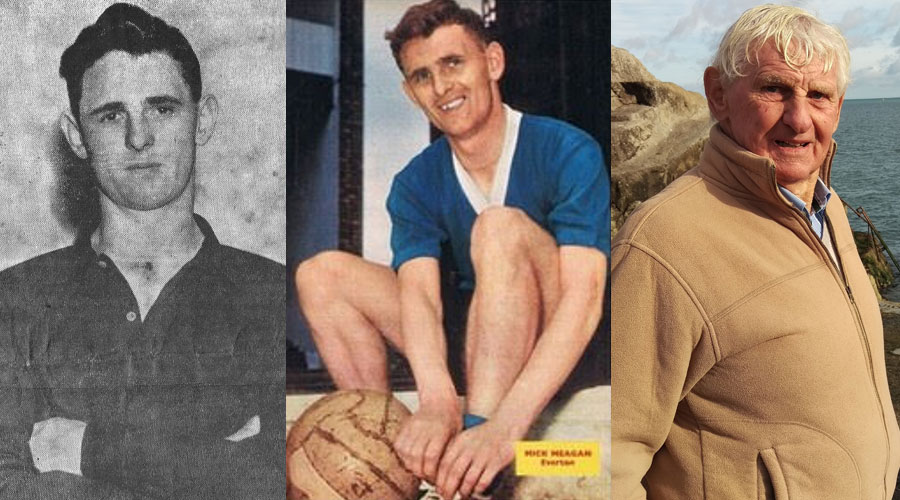
After a further season with the Toffees, Mick was offered in part–exchange to Huddersfield Town, as the Blues secured the services of the best left–back in the land: Ray Wilson. The Dubliner had made 177 appearances for the Blues, but his contribution was far greater – a great club man, he gave support and wise counsel to young players coming through like Colin Harvey. Horace Yates, of the Daily Post, paid warm tribute to the departing club stalwart: ‘Meagan is a model of everything the ideal player should be – uncomplaining, efficient in a quiet way, never a ha'porth of trouble on or off the field. Many will be sorry to see him go.’
Mick upped sticks from his home in Huyton and made new friends on the other side of the Pennines. He rounded off his days in English football at Halifax Town, under Alan Ball senior. He continued his playing career with Drogheda United, combining this with the challenging task of being the first true manager of the Irish national team (1969–71) – he had also won 17 caps in the green shirt. By his own admission, he was ill–suited to management, preferring to put his boots on and play football. This he continued to do at Bray Wanderers and, finally, in to his 40s as player–boss of Shamrock Rovers.
In 1976 he started working as a recreation officer at Central Mental Hospital, in Dundrum. It is of no surprise that his warmth and enthusiasm was a hit with the patients. In the early 1990s he was still kicking a ball as the hospital had entered a football team in a local league. He was quoted as saying: "A lot of our young patients are very keen on soccer so this season we decided to get them involved and join a league. For every old player in the side, we have a youngster who does the running and it works quite well. We train during the lunch and tea intervals – and I must say I enjoy it. It's like stepping back in time for me. We don't have sweepers and midfield men. Instead, we use the old terminology. I am the centre–half and my teammates are inside–forwards and wing–halves.’
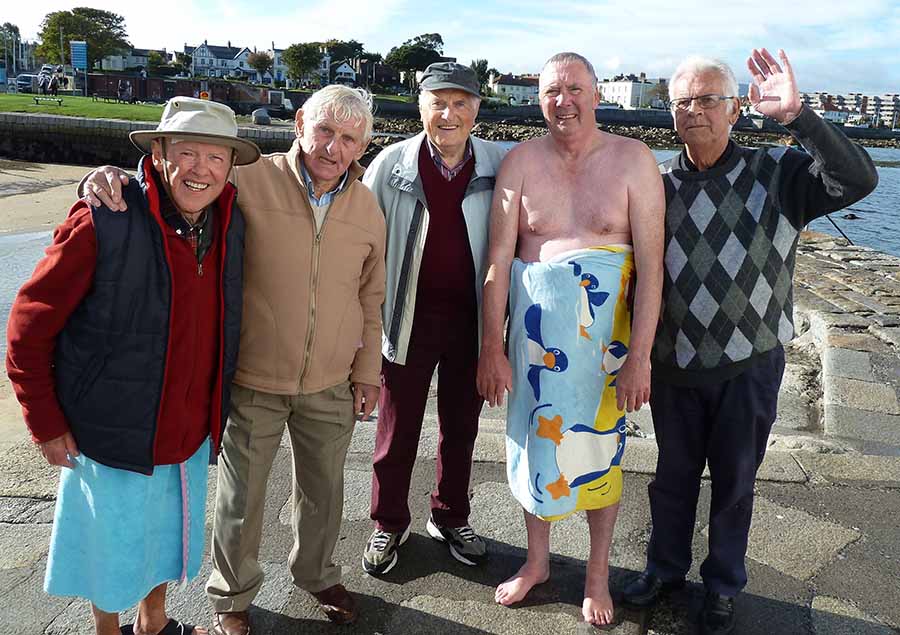
Mick and the bather's club at the Forty Foot near Dublin in 2018
Mick busied himself in retirement with regular rounds of golf, swimming in the sea at the Forty Foot and games of head tennis with fellow veterans. He kept in close touch with his good friends Derek Temple and Dennis Stevens – having the latter over to stay. The Gwladys Street Hall of Fame nights drew Mick back to Merseyside. The instigator, David, recalls: ‘Like many players from his era, Mick was a genuine gentleman and proud Blue. At one Adelphi function, I divulged that I had grown up with him, in that he had featured in the first match I attended at Goodison. It was in September 1957 and Mick replaced the ageing Peter Farrell at left–half in the dramatic 3–3 draw with the reigning champions Manchester United. It was the third of his 177 senior appearances for the club and I detected that, some 45 years on, he remained in awe of Duncan Edwards, his counterpart in the visitors’ line–up.’
A great talker, his sharp (and affectionate) recall of his Everton days was a boon to football historians seeking a better understanding of the Toffees in the Britton, Buchan, Carey and Catterick eras. He is celebrated in his home city with a display of his memorabilia in the FAI head office – Mick and his family were invited for the unveiling of the gallery in 2010. He last got over to L4 in 2013, when he joined surviving former Everton teammates from the triumphant 1962/63 team on the pitch at half–time.
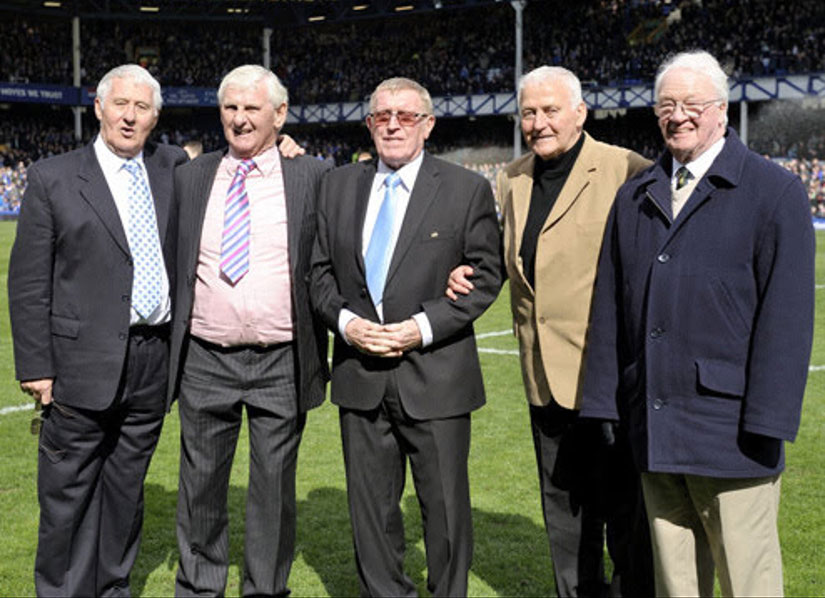
Mick with his 1963 colleagues at Goodison Park in 2013
Mick died peacefully in the great care of the staff at the Orwell Private nursing home. In a final philanthropic act, he decided not to have a funeral – instead having his body donated to medical science at University College Dublin.
Our condolences go to Mick’s loving partner (Derville), his children (Mark and Carol), surviving siblings (Jim, Anna and Peg) and the rest of the family.
Reader Responses
Selected thoughts from readersEither no responses have been submitted so far to this article or previous submissions are being assessed for inclusion.
Add Your Thoughts
Only registered users of Evertonia can participate in discussions.
Or Join as Evertonia Member — it takes just a few minutes and will allow you to post your thoughts on artices across the site.

